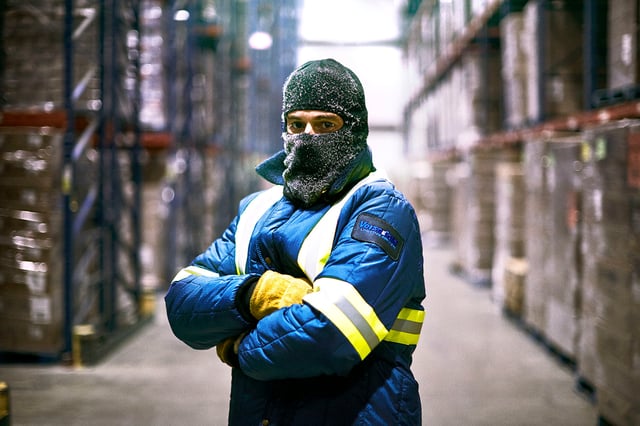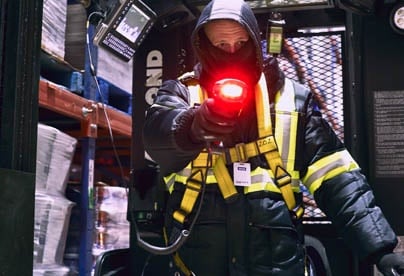
Summer is nearly here and with it comes the occasional stretch of extreme heat. The dangers caused by hot weather are something we face every year in the cold chain business and we have acquired a lot of useful tips and information over the years on how to stay cool and safe in the warmer months. To kick off our Summer Safety series, we share our tips on how to beat extreme heat below.
Quick Tips
Tip #1:
If you notice a person who is experiencing symptoms of heat stroke, you should cool that person as rapidly as possible by applying any available water on their skin. Cold baths and showers, while typically unpleasant, may go a long way in preventing serious heat-related injury. Immediately call Emergency Medical Services.
Tip #2:
Older adults, children younger than the age of 2, and people with weakened immune systems are especially at high risk for heat-related illness and need monitoring during times of extreme heat.
What happens to your body when exposed to extreme heat?
Your body’s primary method of cooling itself down is through sweat. Unfortunately, sweating will not be enough when in extreme heat, and you could risk permanent damage if immediate action is not taken to stay cool and remain hydrated. Always stay informed about possible heat warnings.
What does heat stroke look like?
Heat stroke is no laughing matter and one of the most serious heat-related illnesses, occurring when the human body is not able to regulate its temperature properly. This illness often occurs when your body temperature rises rapidly, and sweating mechanisms fail, causing the body’s internal functions to be unable to cool down. During this time, your body temperature can reach higher than 106o F within less than 15 minutes.
Heat stroke can result in injury, permanent disability, or even death if emergency treatment is not provided quickly.
What are the early warning signs of heat stroke?
Since time is a critical factor in treating heat stroke, detecting, the first warning signs can go a long way in providing the treatment needed to avoid potential injury. While warning signs vary, they may include some of the following symptoms:
- Hot skin that is red and dry to the touch
- A rapid pulse that is very easy to detect
- Extremely high body temperature
- Sudden dizziness and confusion
- Nausea
- Throbbing headache
What can I do when I notice someone is displaying these warning signs?
If you witness any of these warning signs mentioned above, you should take steps to help cool the victim while you or someone else calls for immediate medical assistance. Here are some useful steps you can take:
- Get the person to a shady area that is not in direct sunlight.
- Use whatever method available to cool the person as rapidly as possible. Methods can range from spraying the victim with cool water from the hose to placing them in a cold shower. You should do whatever it takes to cool the person down.
- Monitor body temperature and maintain cooling efforts until the person reaches a reasonable temperature
- If emergency responders don’t arrive quickly, call a hospital emergency room for further instructions.
Prevention of heat-related illness is important no matter how young or healthy you think you are
People who are not among those at highest risk for heat stroke may seem more equipped to deal with extreme heat. However, they can also become ill if they do not appropriately adjust their activities for the weather. That is why it’s important that everyone takes preventative steps to deal with heat-related illnesses and injuries during sweltering weather.
- Drinking plenty of fluids is key, 250 ml every hour, even if you don’t feel thirsty. Avoid caffeinated beverages
- Take cold showers or baths to cool down
- Stay indoors in an air-conditioned place whenever possible
- Wear loose, lightweight, light-colored clothing, a hat and sunscreen when outside
- If you must be outside, try to get your most strenuous tasks done prior to noon or after 4pm to avoid the hottest portion of the day.
- Check local news for health warnings and safety updates
- Never leave children or pets in the car
Certain at-risk groups of people such as the elderly and children younger than the age of 2 are at particularly high risk and should be monitored during these times. Things to watch out for with these at-risk groups are:
- Does the individual have access to air conditioning?
- Are they in need of assistance to keep cool?
- Have they been drinking enough water?
Be smart this summer and take responsible measures to ensure that you and your loved ones can stay healthy during extremely hot weather. Have any other tips for keeping cool? Please share your tips with us below.
Safety is the responsibility of everyone, and through careful planning and personal responsibility, we can all build a safer workplace for everyone to operate within. Contact one of our Sales Specialists today and let us show you why we are the right choice for your business. sales@versacold.com or 1-800-563-COLD










